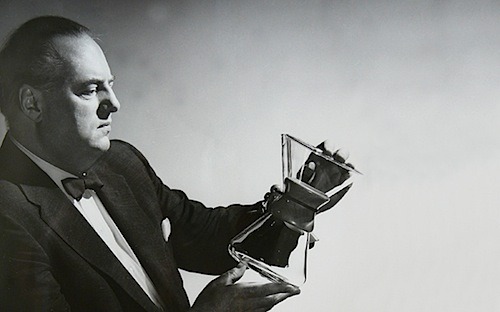Monday, October 31, 2011
Art Begotten, Not Made
Peter J. Schlumbohm was a German chemist who invented the Chemex brewglass, which in addition to brewing a deliciously aromatic cup of coffee, is also in the Museum of Modern Art by virtue of its captivating and yet simple aesthetic. This picture of Schlumbohm contemplating his creation captures the most beautiful moment in the creative life and it invites us to ask how other artists reflect on the birth of their artwork.
How did Eliot feel when the hands that wrote The Four Quartets felt them bound for the first time?
How did Mozart feel when Don Giovanni's notes rang not only in his mind but in the air?
How did van Gogh feel when his vivid sunflowers stared back at him from amidst their strokes?
How did the writers and printers of the King James Version of the Bible feel when every word was translated, every page was cut and every letter stamp was assembled and united in one leather bound song.
I imagine that moment, when the art looks back at the artist, is a little like when "the LORD God formed man of the dust of the ground and breathed into his nostrils the breath of life and man became a living soul" (Gen 2:7). It is an eerie moment when your art looks back at you; bearing something of your image and likeness (Gen 1:26-7). It seems fitting that Alyosha, Ivan and Dmitri Karamazov in The Brothers Karamazov bear the middle name "Fyodorovich," for the father in their narrative is Fyodor Karamazov but the father of their narrative is Fyodor Dostoevsky. Imagine the massive genealogies Dostoevsky fathered through his novels.
Art is not just creating but begetting and the pieces are children born of our experience and creativity. Just as the Schlumbohm remembers the thought and love he has poured into this coffee glass, I know that God looks upon us thoughtfully and lovingly pouring more of Himself into us, because like most perfectionists, he's not done with us. The Divine Artist desires His image and likeness to be fully manifest in his children. St. Paul tells us that we see in a "mirror" dimly: meaning that the artwork and the Artist are in the end meant to see themselves in each other, for as St. John writes:
"Beloved, now we are the sons of God, and it doth not yet appear what we shall be, but we know that when he shall appear, we shall be like him: for we shall see him as he is" (1 John 3:2).
Until then, you and I are a piece of work.
Subscribe to:
Post Comments (Atom)

Love this!
ReplyDelete